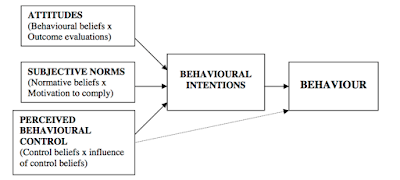 By now, we’ve all seen them in one way or another. Whether it be in person (Halloween is approaching…), on our social media newsfeeds or in the media. Newspaper headlines read ‘Killer clown craze: 12 of the creepiest UK sightings’ (The Telegraph, 17th Oct), ‘Killer clown with machete threatens two girls in Suffolk’ (The Telegraph, 16th Oct), ‘Childline flooded with calls about killer clown craze’ (Daily Mail, 13th Oct). With the number of these ‘killer clowns’ growing exponentially, you’ve got to ask the question of what took this from a Halloween outfit to a craze confining communities to their homes.It may not come as a surprise that research has shown the media is strikingly successful in telling its audience what to think about. The more the media reports something, the more available that information is to us and the more frequently we think about it. The agenda setting theory, first proposed in 1922, outlines this effect. It is not surprising then, that killer clowns have become the topic of conversation with them consecutively filling newspaper headlines and their masks filling every scroll down social media. Could it be that this high exposure is what has caused the ‘craze’? Could it be that the volume of others putting on a mask is what is encouraging so many more to do the same?
By now, we’ve all seen them in one way or another. Whether it be in person (Halloween is approaching…), on our social media newsfeeds or in the media. Newspaper headlines read ‘Killer clown craze: 12 of the creepiest UK sightings’ (The Telegraph, 17th Oct), ‘Killer clown with machete threatens two girls in Suffolk’ (The Telegraph, 16th Oct), ‘Childline flooded with calls about killer clown craze’ (Daily Mail, 13th Oct). With the number of these ‘killer clowns’ growing exponentially, you’ve got to ask the question of what took this from a Halloween outfit to a craze confining communities to their homes.It may not come as a surprise that research has shown the media is strikingly successful in telling its audience what to think about. The more the media reports something, the more available that information is to us and the more frequently we think about it. The agenda setting theory, first proposed in 1922, outlines this effect. It is not surprising then, that killer clowns have become the topic of conversation with them consecutively filling newspaper headlines and their masks filling every scroll down social media. Could it be that this high exposure is what has caused the ‘craze’? Could it be that the volume of others putting on a mask is what is encouraging so many more to do the same?  Figure One: The Theory of Planned BehaviourThe theory of planned behaviour suggests there are three components that lead to an intention to perform a certain behaviour (see figure one). Perceived behavioural control is simply the belief that you can control your behaviour. Perhaps the consequence of going out and scaring your community is too high; a risk of arrest, for example. But, thanks to the medias mass publications of clowns filling the streets, their perceived behavioural control is reassessed. An individual’s belief that they can to perform this behaviour grows, under the cover of a mask. Suddenly, a behaviour that seemed out of reach is not so anymore. This of course, ties in with social norms. Whilst it may have been considered unacceptable to go and scare your local community before, suddenly a lot more people doing it and it rapidly becomes a much more normative, and therefore an accepted behaviour to perform. Of course, it is the media that ensures we are aware of the growing number of clowns in our streets. The attitude towards the behaviour, in this example at least, is likely to build from the other components. The majority of us are probably horrified by these killer clowns, however, there are clearly individuals who have a more positive attitude to the craze. Or perhaps a more positive attitude of the behaviour has been formed as a result of the high exposure; it could be considered humourous rather than horrifying. According to the theory of planned behaviour, the combination of these three components lead to an intent to perform a behaviour. Although hard to get inside the head of a killer clown, you can see how putting on a mask, wig and wandering the local streets can suddenly be perceived as more acceptable; a belief that we possibly owe to media sources for sharing. This media exposure should boldly take its place in the diagram of the theory of planned behaviour, feeding into the three components that influence behaviour intentions (see figure two).
Figure One: The Theory of Planned BehaviourThe theory of planned behaviour suggests there are three components that lead to an intention to perform a certain behaviour (see figure one). Perceived behavioural control is simply the belief that you can control your behaviour. Perhaps the consequence of going out and scaring your community is too high; a risk of arrest, for example. But, thanks to the medias mass publications of clowns filling the streets, their perceived behavioural control is reassessed. An individual’s belief that they can to perform this behaviour grows, under the cover of a mask. Suddenly, a behaviour that seemed out of reach is not so anymore. This of course, ties in with social norms. Whilst it may have been considered unacceptable to go and scare your local community before, suddenly a lot more people doing it and it rapidly becomes a much more normative, and therefore an accepted behaviour to perform. Of course, it is the media that ensures we are aware of the growing number of clowns in our streets. The attitude towards the behaviour, in this example at least, is likely to build from the other components. The majority of us are probably horrified by these killer clowns, however, there are clearly individuals who have a more positive attitude to the craze. Or perhaps a more positive attitude of the behaviour has been formed as a result of the high exposure; it could be considered humourous rather than horrifying. According to the theory of planned behaviour, the combination of these three components lead to an intent to perform a behaviour. Although hard to get inside the head of a killer clown, you can see how putting on a mask, wig and wandering the local streets can suddenly be perceived as more acceptable; a belief that we possibly owe to media sources for sharing. This media exposure should boldly take its place in the diagram of the theory of planned behaviour, feeding into the three components that influence behaviour intentions (see figure two).  Figure Two: Addition of Agenda Setting to Theory of Planned BehaviourThe role of the media treads a very fine line. The damaging effects of them sharing the latest craze can clearly be seen, essentially taking what could have been a few separate instances to the ‘killer clown craze’. But, how long would it take for us to begin to resent the media should they stop sharing the latest horrors? Would we not be outraged if we came face-to-face with a killer clown only to find we could have been warned to stay in our homes, if the media had published the latest instances it had been informed of? Regardless, this latest craze illustrates the strength of agenda setting theory, and the power the media has over us and our behaviours.ReferencesFrancis, J. J., Eccles, M. P., Johnston, M., Walker, A., Grimshaw, J., Foy, R., Kaner, E. F. S., Smith, L., & Bonetti, D. (2004). Constructing questionnaires based on the theory of planned behaviour. A manual for health services researchers, 2010, 2-12. Rogers, E. M., Dearing, J. W., & Bregman, D. (1993). The anatomy of agenda‐setting research. Journal of communication, 43(2), 68-84.
Figure Two: Addition of Agenda Setting to Theory of Planned BehaviourThe role of the media treads a very fine line. The damaging effects of them sharing the latest craze can clearly be seen, essentially taking what could have been a few separate instances to the ‘killer clown craze’. But, how long would it take for us to begin to resent the media should they stop sharing the latest horrors? Would we not be outraged if we came face-to-face with a killer clown only to find we could have been warned to stay in our homes, if the media had published the latest instances it had been informed of? Regardless, this latest craze illustrates the strength of agenda setting theory, and the power the media has over us and our behaviours.ReferencesFrancis, J. J., Eccles, M. P., Johnston, M., Walker, A., Grimshaw, J., Foy, R., Kaner, E. F. S., Smith, L., & Bonetti, D. (2004). Constructing questionnaires based on the theory of planned behaviour. A manual for health services researchers, 2010, 2-12. Rogers, E. M., Dearing, J. W., & Bregman, D. (1993). The anatomy of agenda‐setting research. Journal of communication, 43(2), 68-84.
Patching the Shoplift Bug: What You Should Be Doing
If you haven’t patched this vulnerability, you should.  By: Chase PalmerSenior Program ManagerCISSP In early 2015, Magento found a vulnerability known as Shoplift Bug and released a patch for it. Unfortunately, many businesses still haven’t patched this vulnerability, which could threaten their e-commerce integrity.Here is some more information about the Shoplift Bug, how it makes your system vulnerable, and what you need to do to combat it.SEE ALSO: How do Hackers Hack?How does the Shoplift Bug work?
By: Chase PalmerSenior Program ManagerCISSP In early 2015, Magento found a vulnerability known as Shoplift Bug and released a patch for it. Unfortunately, many businesses still haven’t patched this vulnerability, which could threaten their e-commerce integrity.Here is some more information about the Shoplift Bug, how it makes your system vulnerable, and what you need to do to combat it.SEE ALSO: How do Hackers Hack?How does the Shoplift Bug work?  Through the Shoplift Bug, hackers can remotely execute code on Magento software. This vulnerability seems to affect both the community and enterprise versions of Magento.The Shoplifting exploit is actually a chain of vulnerabilities in the Magento core software, but is frighteningly simple. The exploit uses a Python script that forces the server to downgrade the website from HTTPS to HTTP and then uses SQL injection to create a new user with administrative privileges.Once the attacker has access to the dashboard with administrator access, they will typically install software through the console that will create a backdoor that allows the attacker to remotely alter the functionality of the online store, add or remove products, change the price of products, add phony coupons, and much more.Follow for more data security articles like thisWhat should I do? Unfortunately, this exploit was highly automated and nearly all vulnerable instances of the Magento dashboard are assumed to be compromised. If you don’t know if you’ve patched your site recently or if you’re a Magento user, check on MageReport.com.If you haven’t installed this patch, here’s a list of steps you should take to patching your website:
Through the Shoplift Bug, hackers can remotely execute code on Magento software. This vulnerability seems to affect both the community and enterprise versions of Magento.The Shoplifting exploit is actually a chain of vulnerabilities in the Magento core software, but is frighteningly simple. The exploit uses a Python script that forces the server to downgrade the website from HTTPS to HTTP and then uses SQL injection to create a new user with administrative privileges.Once the attacker has access to the dashboard with administrator access, they will typically install software through the console that will create a backdoor that allows the attacker to remotely alter the functionality of the online store, add or remove products, change the price of products, add phony coupons, and much more.Follow for more data security articles like thisWhat should I do? Unfortunately, this exploit was highly automated and nearly all vulnerable instances of the Magento dashboard are assumed to be compromised. If you don’t know if you’ve patched your site recently or if you’re a Magento user, check on MageReport.com.If you haven’t installed this patch, here’s a list of steps you should take to patching your website: Download and implement the two patches from the Magento Community Edition download pageTest the patches in a development environment first to make sure they’re working properly before deploying them in your production environmentCheck for unknown files in web server document root directory. If you find any, remove the files, keeping a secure copy if possibleCheck all admin accounts to make sure they’re all authorized. Change all admin passwords have you suspect a breachCheck for unknown IP addresses accessing the system, since hackers may be using legitimate credentials to gain access to your system. Examples of addresses could include 62.76.177.179, 185.22.232.218, and 23.245.26.35 If you need help installing patches, refer to Magento’s Community Security patch forum where community members, moderators, and Magento can assist with questions about downloading and installing patches.If you haven’t already installed this latest patch, you should do so as soon as possible.
Download and implement the two patches from the Magento Community Edition download pageTest the patches in a development environment first to make sure they’re working properly before deploying them in your production environmentCheck for unknown files in web server document root directory. If you find any, remove the files, keeping a secure copy if possibleCheck all admin accounts to make sure they’re all authorized. Change all admin passwords have you suspect a breachCheck for unknown IP addresses accessing the system, since hackers may be using legitimate credentials to gain access to your system. Examples of addresses could include 62.76.177.179, 185.22.232.218, and 23.245.26.35 If you need help installing patches, refer to Magento’s Community Security patch forum where community members, moderators, and Magento can assist with questions about downloading and installing patches.If you haven’t already installed this latest patch, you should do so as soon as possible.![]() TweetPatch your systemsRemember, it’s important to stay up to date on your systems and patch any vulnerabilities that pop up. Tips to do this include:Sign up for newsletters/notifications from vendors you use: Once they release a new patch, you’ll be notified. Patch the vulnerability as soon as possible: The sooner you fix the vulnerability, the less time you’ll be open to attacksSet up a schedule to regularly patch and update software: This will keep your software updated in its most secure state. SEE ALSO: Security Patches in Your Business: Complying with PCI Requirement 6.1Chase Palmer (CISSP) is the Senior Program Manager and has been working at SecurityMetrics for seven years. He manages the company’s largest corporate partners in running mass Level 4 PCI DSS programs worldwide. Chase has a Bachelor’s degree in Business Management from Western Governor’s University. He currently lives in Provo, Utah, and he loves everything about motorcycles.
TweetPatch your systemsRemember, it’s important to stay up to date on your systems and patch any vulnerabilities that pop up. Tips to do this include:Sign up for newsletters/notifications from vendors you use: Once they release a new patch, you’ll be notified. Patch the vulnerability as soon as possible: The sooner you fix the vulnerability, the less time you’ll be open to attacksSet up a schedule to regularly patch and update software: This will keep your software updated in its most secure state. SEE ALSO: Security Patches in Your Business: Complying with PCI Requirement 6.1Chase Palmer (CISSP) is the Senior Program Manager and has been working at SecurityMetrics for seven years. He manages the company’s largest corporate partners in running mass Level 4 PCI DSS programs worldwide. Chase has a Bachelor’s degree in Business Management from Western Governor’s University. He currently lives in Provo, Utah, and he loves everything about motorcycles.
Facial Recognition and Understanding Emotional Expressions
 When you recognize a friend’s face, how do you know? Do you make a careful study of their nose and cheekbones? Are you thrown off if they don’t wear the usual expression?
When you recognize a friend’s face, how do you know? Do you make a careful study of their nose and cheekbones? Are you thrown off if they don’t wear the usual expression?
The vast majority of people probably scoffed at those questions. Facial recognition isn’t a matter of careful study, but instead it is an instantaneous process. Your brain just knows whose face you are seeing. As Tim Newman pointed out in Medical News Today, this underscores how incredible the process of facial recognition is, given the complexity of and similarities between the thousands of faces we see on a regular basis.
Not only is facial recognition itself a remarkable ability, but it is closely tied with crucial cognitive functions.
Facial recognition is a key part of understanding emotional expressions. Humans use facial recognition skills to detect deviations from normal or prototypical expressions. This process involves noticing when brows are furrowed or eyes are squinted, instantly comparing those expressions with what is expected upon seeing a face.
Because the recognition of a face is instantaneous, it is only a small cognitive step towards noticing when the face appears differently than expected, and this difference is then analyzed as displaying a certain emotion.
The ability to perceive emotions in this fashion appears to be a basic human feature. The same sort of basic human expressions, such as anger, revulsion, and sadness are found across the world, from Japan to Borneo to the United States. Even emotions displayed in ancient cave paintings show similar expressions!
Similarly, by recognizing faces in this sense, humans also make quick judgments as to the attractiveness of an unfamiliar face. They may often be unable to explain why a face seems attractive or not, just as we are unable to describe exactly how we recognize familiar faces or emotions. We immediately process many factors, including facial symmetry, to develop these impressions.
In fact, the ability to recognize and process faces in this fashion is deeply rooted in our species. Human babies can even differentiate between human and, for example, gorilla faces at an incredibly early age. While 3-month olds can tell human and gorilla bodies apart, even newborn babies can distinguish faces.
And it isn’t just humans! Other primates have a similar ability. Chimpanzees, who have the most similar recognition skills to humans, quickly identify familiar faces, and they can even distinguish familiar family characteristics in unfamiliar faces. This is similar to when we meet someone and notice that they look like a cousin or a sibling.
Understanding this incredible ability has many practical implications, even if they may not seem immediately obvious. Most intuitively, the ability to recognize faces is important for law enforcement work and eyewitness testimony. Witnesses must be able to correctly recognize the faces of criminal suspects, and law enforcement officers must recognize faces from security footage or photo IDs.
These important applications are complicated by the fact that people range considerably in their ability to recognize faces.
Some individuals, called super-recognizers, are incredibly good at matching unfamiliar faces, and they mark the high end of a spectrum that includes all levels of ability. This also includes those suffering from face-blindness, or prosopagnosia. These individuals are not only unable to match unfamiliar faces but can be unable to recognize close friends of family members. Instead, they must rely on other cues, like voices or hair color.
Brad Duchaine, who studies facial recognition at Dartmouth College, wrote in 2015 about the impact that these variations have on law enforcement practices. If a witness cannot successfully recognize faces or mistakenly identifies the defendant, their testimony will be severely compromised. Similarly, if law enforcement officials have trouble recognizing faces, they may be unable to complete basic tasks like ensuring that a photo ID matches its owner.
Facial recognition is a critical part of human interaction, comprising the ability to notice emotions of facial similarities, but it is a skill like many others. While some people are naturally better at it, it is something that can be taught and better understood.
For more information about universal emotions, see our article on the Seven Basic Emotions, and click here to find out how you can strengthen this skill.
- « Previous Page
- 1
- …
- 117
- 118
- 119
- 120
- 121
- …
- 561
- Next Page »